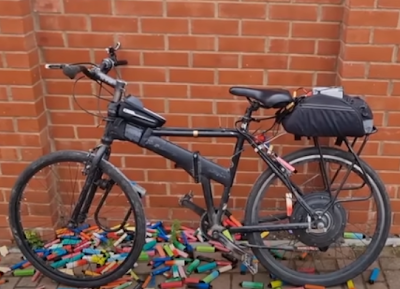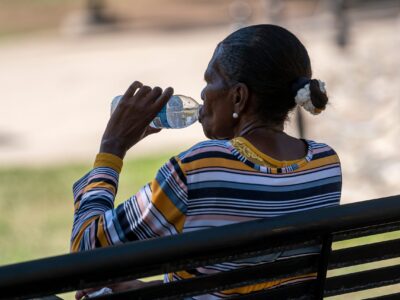(Bloomberg) —
In 2019, Ryan Russo began working on a bike plan for Oakland, California. As the head of the city’s department of transportation, Russo was adamant that the plan serve every neighborhood, including areas that traditionally lacked both bike infrastructure and a vocal bike advocacy community.
“We recognized there were historically underserved communities where trust was weak that needed a higher level of listening,” Russo said. In working-class East Oakland, most residents used cars or transit to get to work; some saw bike lanes as harbingers of gentrification, while others were unconvinced that the new infrastructure would be enough to convince local people to ride. “One of things that came out was, we would love to bike for transportation in our neighborhood, but the pavement conditions were so poor that that was a barrier,” Russo said.
In response to this feedback, Russo’s department developed a more comprehensive safe streets plan for East Oakland that also included sidewalk repairs and street repavings. Instead of just building protected bike lanes on major arterials, the city opted for a neighborhood-wide network of “calm streets” incorporating speed bumps, roundabouts, and limited vehicle access zones to tame auto traffic. In 2021, the city won a $17 million state grant to begin rebuilding East Oakland’s roads.
“There is a whole portfolio of interventions that you can do to move towards that safe-for-all-ages-and-abilities system that will make cycling a potential choice for more people,” said Russo, who now leads the National Association of City Transportation Officials.
This week, NACTO released an updated version of its Urban Bikeway Design Guide to spread these lessons. The document aims to help cities build comprehensive, interconnected bike networks that work well with transit systems and boost walking and street safety. Along with laying out the nuts and bolts of building bike infrastructure, it offers guidance on the tricky politics of bike lane installation, and strategies to account for the rise of e-bikes and cargo bikes.
The new guide is nearly double the length of its most recent predecessor, from 2012, reflecting advances in bike infrastructure design that have emerged over the last decade: Contra-flow bike lanes, protected intersections, bus boarding islands, and many more innovative street treatments are catalogued in great detail. The idea is to help cities develop bike infrastructure that works for a wide variety of neighborhood contexts. All of those options should make it easier to build out the citywide cycling networks that many cities promise, but often fail to implement. “It’s not just a kit of parts for an individual bike lane,” Russo said. “It’s a blueprint for building a complete bike network.”
The guide is also something of a political playbook for selling bike lanes to an often-skeptical public, executing them in a timely and cost-effective manner, and maintaining infrastructure over the long term. “We don’t just want plastic posts everywhere,” Russo said. “We want beautiful streets that support local businesses, that provide green infrastructure.”
One strategy for building public support is showing how bike infrastructure can improve street safety for everyone, not just cyclists. The US Department of Transportation launched a National Roadway Safety Strategy in 2022 to address a surge in traffic deaths; since then, pedestrian and cycling deaths have dipped slightly but remain well elevated above pre-pandemic levels. Accordingly, many designs in the guidebook are less about making room for bikes and more about taming speeding cars. Branding can reflect these priorities: As it evolved, the plan initially known as East Oakland Neighborhood Bike Routes was renamed Calm East Oakland Streets.
Another timely element of the new guide is a list of strategies for accommodating a wider range of vehicles, like electric bikes and trikes as well as e-scooters and cargo bikes. These options have significantly expanded the pool of potential cyclists, but battery-powered machines can also be larger and faster than pedal-only bikes, creating a demand for wider lanes — and potential friction with other cyclists.
Russo calls his own e-bike a “game-changer that’s kept me on a bike,” but he acknowledges that “there can be a lot of frustration” among riders and pedestrians around the speeds hit by riders on electric machines. “Some of these vehicles are actually more motorcycles, and should be in mixed-purpose travel lanes.”
For NACTO board chair Janette Sadik-Khan, who served as New York City Transportation Commissioner from 2007 to 2013, the new guidebook offers an opportunity to reflect on how much progress has been made in the field. When NACTO created its first bikeway design guide, in 2011, “we had only recently put down the first parking-protected lane in New York,” Sadik-Khan said. “Everybody knows what a protected bike lane is now, but that really wasn’t the case back then.”
Since then, dozens of US cities have significantly expanded their networks of protected bike lanes. New York City alone added more than 600 miles of cycling infrastructure, according to the NYC Department of Transportation. Cities not known for being particularly bike friendly, like Des Moines, Iowa, and Spartanburg, South Carolina, have also built out physically separated bike lanes. But while drivers and property owners may have become more familiar with the new street alignments, controversy over their installation often persists.
“That first urban bike design guide took the guesswork and improvisation out of building great streets,” said Sadik-Khan, who’s also a principal at Bloomberg Associates, a consulting firm operated by Bloomberg Philanthropies. (Bloomberg Philanthropies is the charitable organization of Michael Bloomberg, the founder of Bloomberg LP, the parent of Bloomberg News.) It also pushed federal and state governments to add bike infrastructure treatments to their road design manuals: “Cities have the technical and legal backing to know they’re not going rogue if they put down a contra-flow bike lane.”
Now, Sadik-Khan wants to see cities build on that foundation. The mission is “to change the practice of how streets are designed and delivered in every city, on every kind of street and in every kind of neighborhood,” she said. “In a time when we are looking to grow our cities and to deal with climate change and deal with the issue of affordability, bike lanes and bike programs check all of those boxes.”





